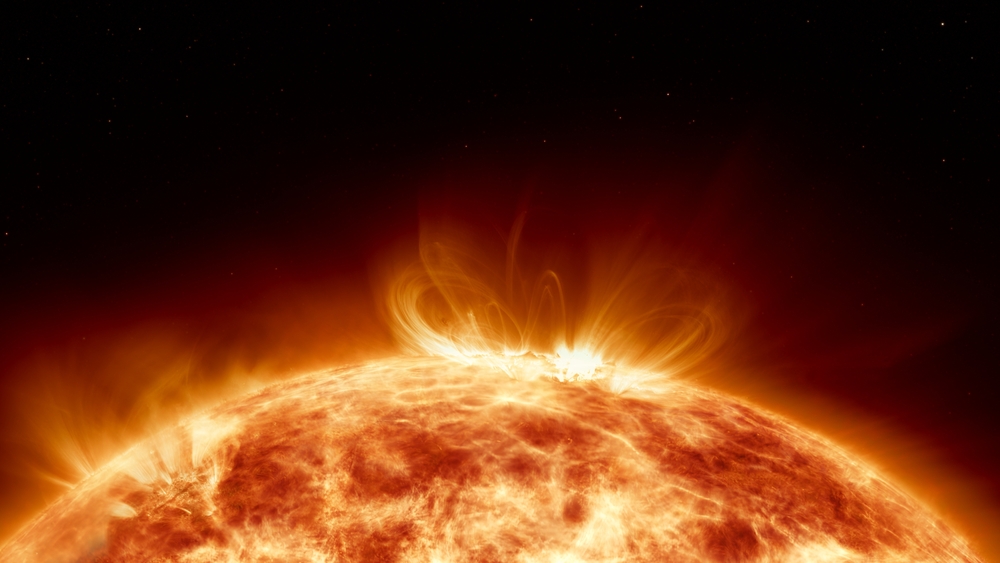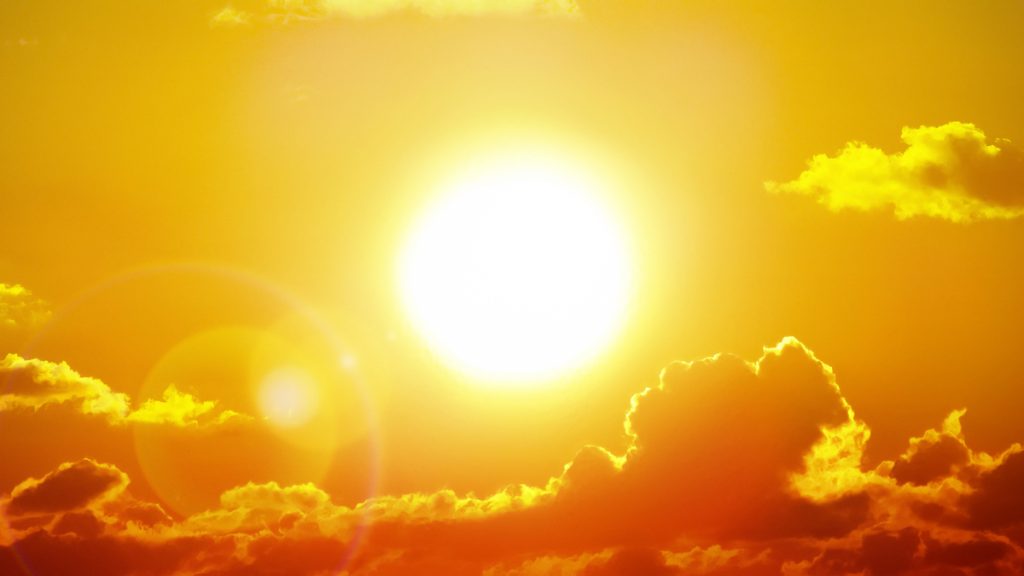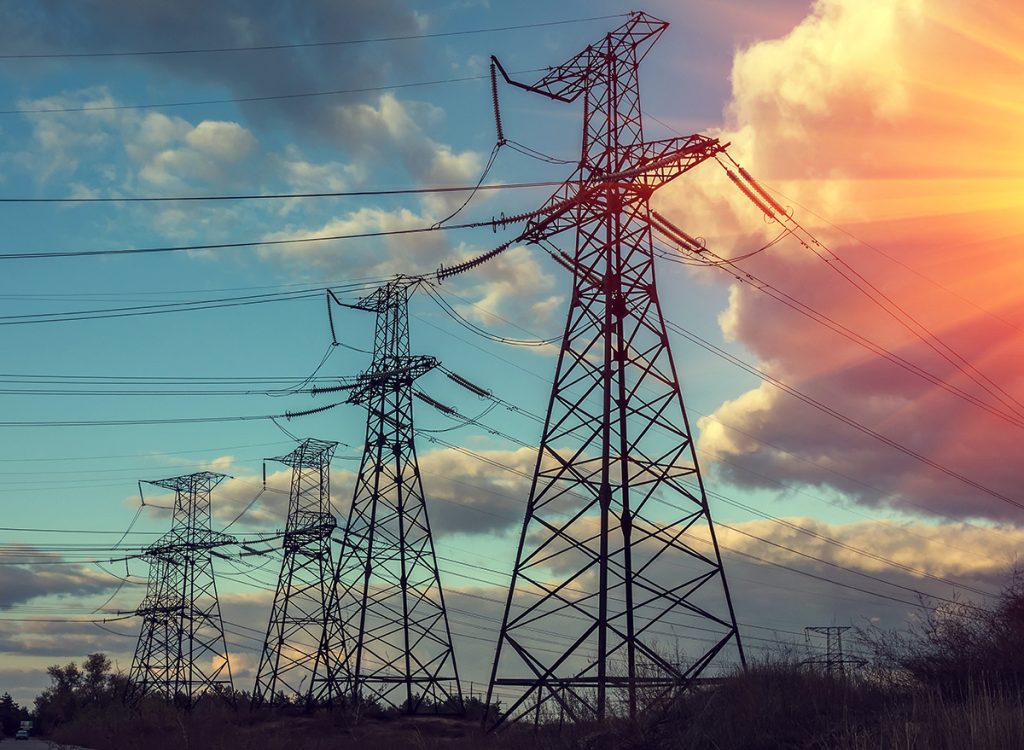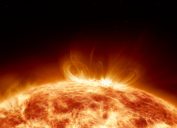Intense Solar Storms May Peak Faster Than Expected—What That Means for Earth
Our solar system's star is becoming more active about two years ahead of schedule.

It's nearly impossible to count all the ways the sun affects our daily lives, both directly and indirectly. Its powerful rays allow flowers to bloom, crops to grow, and life as we know it to exist—while also making sunscreen a necessity and creating hot weather. And even if you aren't paying attention to its movement, it still creates daylight and nightfall as our planet spins around it. But scientists have pointed out that our solar system's star is also beginning to spike in other kinds of activity as part of its life cycle. Now, some believe that the intense solar storms may peak much faster than expected. Read on to see what this means for Earth in the coming months.
READ THIS NEXT: 8 Amazing Things You Can See in the Night Sky Without a Telescope.
The sun is seeing a spike in activity as it approaches its expected "solar maximum."

While most of us on Earth experience changes in the way the sun feels as the seasons progress every year, the center of our solar system actually has its own patterns that might not always be as apparent to us. This includes our star becoming more active lately after entering what's known as Solar Cycle 25 in Dec. 2019.
The 11-year periods are marked by highs and lows in the sun's activity that often culminate with an increase of solar storms and sunspots before the star's magnetic poles eventually reverse. And even though it might sound alarming, this change in activity is an expected occurrence that scientists have been observing for centuries.
Scientists say there's evidence that solar activity is peaking earlier than expected this cycle.

However, like any other natural phenomenon, cycles can play out differently each time. NASA previously said the sun was "already exceeding expectations" with the intensity of solar events ahead of its expected peak in 2024. And now, some scientists believe there's evidence that the sun will actually peak much sooner than expected and see the most activity by the end of this year, Live Science reports.
Part of this theory rests on one key indicator of our star's activity. "Sunspots appear when strong magnetic fields poke through the surface of the sun," Alex James, PhD, a solar physicist at University College London, told Live Science. "By looking at those sunspots, we can get an idea of how strong and complex the sun's magnetic field is at that moment."
While no two cycles are identical, Solar Cycle 25 is already showing signs that it might be ahead of schedule. In Dec. 2022, the sun experienced an eight-year sunspot peak before NASA observed twice as many sunspots as predicted for the following month, per Live Science.
And it's not just increased sunspots that suggest the sun is potentially peaking early. Scientists have also noted a spike in intense solar flares, a temperature rise in the Earth's upper atmosphere, and larger-than-normal plasma events on the sun's surface that point towards a different timeline, Live Science reports.
RELATED: For more up-to-date information, sign up for our daily newsletter.
The storms could noticeably affect life on Earth in a few ways.

Fortunately, those of us on Earth are protected from the increased radiation thrown our way by the sun thanks to our magnetic field, according to NASA. But the ramped-up solar activity could have some other noticeable effects on our daily lives beyond just being able to see the Northern Lights in more locations.
If a solar flare is timed just right—which is when it's facing directly toward our planet—the blast of energy "can impact high-frequency (HF) radio communications, electric power grids, [and] navigation signals," according to NASA.
In previous events, electrical grids have been temporarily knocked out and GPS navigation has been affected. This includes an event in which a solar storm knocked out power grids across Quebec, Canada, in 1989, cutting electricity for nine hours, Insider reported.
And even though the energy from most storms will only create interference for a few hours, the damage they can cause could be more long-lasting. Besides necessary repairs on power systems, such geomagnetic storms can cause the Earth's upper atmosphere to become denser, and the situation can be disastrous for the satellites orbiting above us that we rely upon. In fact, a mild solar storm cost SpaceX 40 of its brand-new Starlink internet satellites when they fell from orbit soon after launch, Space.com reports.
Coincidentally, our leaps in technological capabilities have made us somewhat more vulnerable to solar activity. "We have an increasing dependence on space-based technology and ground-based infrastructure that are susceptible to the dynamic nature of space," NASA warned.
The jump ahead in schedule could mean we need to stay "vigilant" for a while longer, experts say.

Even if this cycle's "solar maximum" does arrive earlier than expected, it doesn't mean the situation will immediately start to improve on the flip side. According to Robert Leamon, a NASA research scientist, prior data has shown a difference between even and odd numbered cycles, suggesting the tail end could be even more disruptive.
"Since Cycle 25 is odd, we might expect the most effective events to happen after the maximum, in 2025 and 2026," Leamon told Space.com. "This is because how the poles of the sun flip every 11 years. You want the pole of the sun in the same orientation compared to the poles of Earth so that then causes the most damage and the best coupling from the solar wind through Earth's magnetic field."
These conditions mean we won't be able to let our guard down anytime soon. "We need to be vigilant for about five more years," he told the website.





















